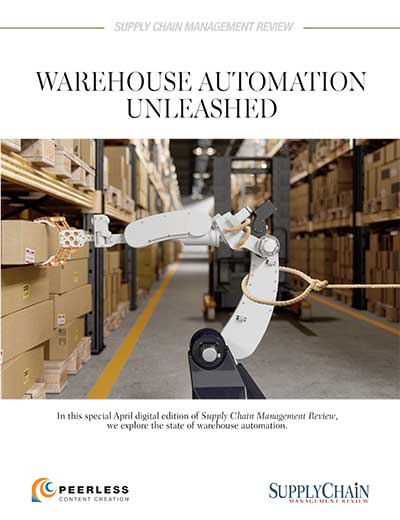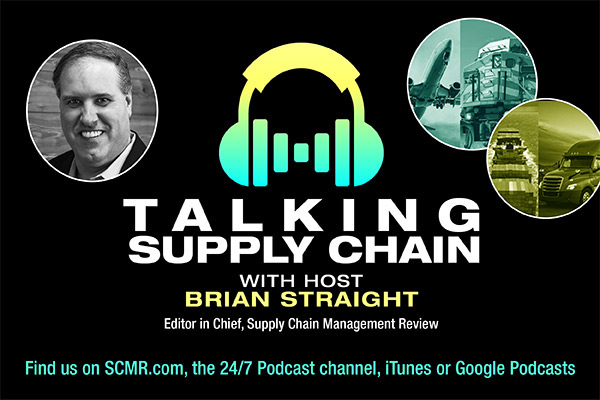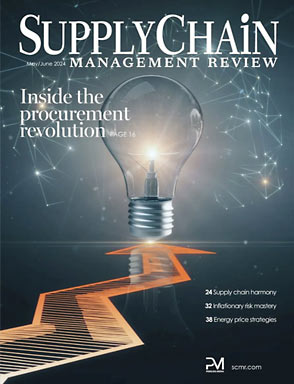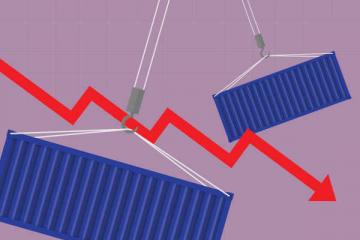The pandemic has certainly brought greater attention to the issue of supply chain disruption.
The Hackett Group’s new research, “Year-Round Disruption: The Costs and Risks for Supply Chains,” details the leading causes of disruption in today’s supply chains and highlights the impact of the fractured buyer-supplier relationship on supply chain performance.
The research quantifies the early impact of the pandemic on global supply chains. Purchase order line item changes increased dramatically – from an average of 40% in 2019 to over 60% in February 2020.
It also quantifies how effective buyers and suppliers are at dealing with interruptions. A total of 19% consistently fell short, and another 38% performed unevenly, sometimes meeting on-time delivery targets and sometimes falling short. An analysis of individual suppliers revealed similar stats, with 25% consistently late and 26% seeing sporadic performance.
The research cites operational waste, excess safety stock and revenue loss among the leading business impacts of supply chain disruption.
From Laura Gibbons – one of the report’s authors – if she thought carrying too much inventory due to e-commerce pressures as should be regarded as an ongoing risk.
Her response:
In the report, the excess inventory we discuss is referring to the inventory held in excess of target levels (which already account for some additional inventory to manage sharp demand increases or other regular inventory fluctuations). So, yes, many retailers and manufacturers will continue to overstock for demand changes. What they should aim to avoid is overstocking to account for late shipments from suppliers or other preventable issues in the supply chain.
Tom Kieley, CEO and co-founder of SourceDay – which provided data for the report – answered the same question in a separate interview:
“Revenue losses in the supply chain should not be the cost of doing business. Yet time and time again, poor supply chain performance continues to put revenue at risk, often without companies even knowing it. It’s more important than ever for manufacturers to find ways to convert supply chain risk into opportunities that safeguard revenue and help them realize hard cost-savings.”
“Buyer-supplier failure isn’t the underlying cause of poor supply chain performance, it’s a symptom. Stagnant ERP data that doesn’t connect with a company’s supplier network means that buyers and suppliers are handicapped by default. The only way to fix it is to connect the ERP to suppliers and give operational teams the real-time visibility and collaboration they need to manage the constant change and eliminate surprises.”
SC
MR


Latest Supply Chain News
- Tech investments bring revenue increases, survey finds
- Survey reveals strategies for addressing supply chain, logistics labor shortages
- Israel, Ukraine aid package to increase pressure on aerospace and defense supply chains
- How CPG brands can deliver on supplier diversity promises
- How S&OP provides the answer to in-demand products
- More News
Latest Resources

 Explore
Explore
Business Management News
- Survey reveals strategies for addressing supply chain, logistics labor shortages
- How CPG brands can deliver on supplier diversity promises
- How S&OP provides the answer to in-demand products
- AI, virtual reality is bringing experiential learning into the modern age
- Tips for CIOs to overcome technology talent acquisition troubles
- There is still work to do to achieve supply chain stability
- More Business Management
Latest Business Management Resources

Subscribe

Supply Chain Management Review delivers the best industry content.

Editors’ Picks





